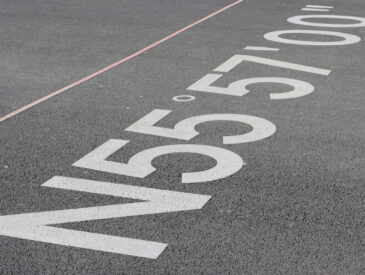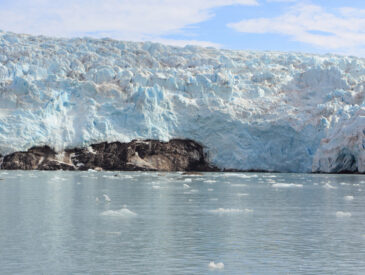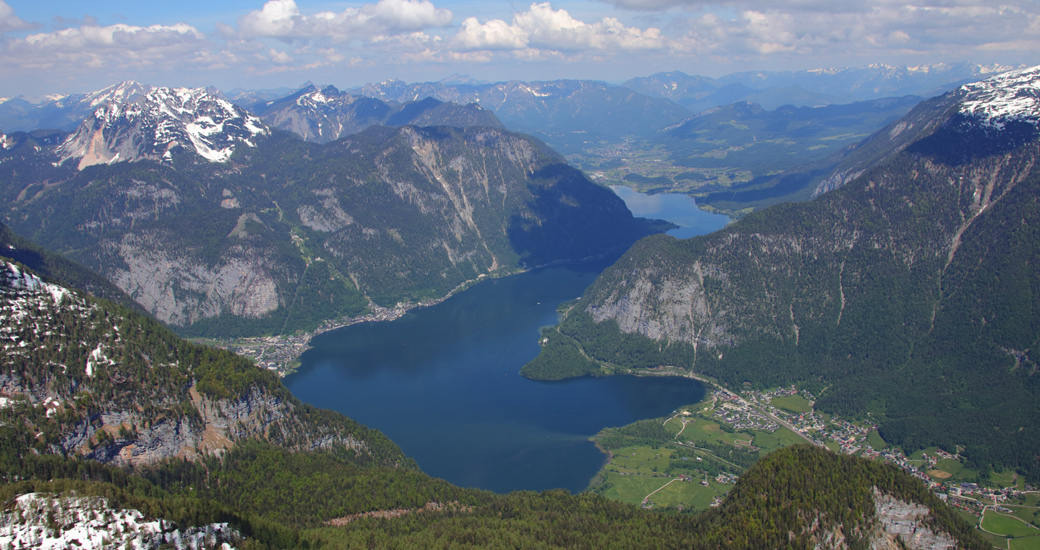
Although a visit to Hallstatt could be achieved as a day trip from Salzburg, I wanted to experience more of the surrounding area rather than bounce in and out via the usual photo spot. Thus I split my long weekend into two nights in the countryside and two in the city. Whilst Salzburg is an entirely pleasant destination, I’d actually suggest tipping the balance further, and spending most of your time here by the Hallstätter See!
Obertraun
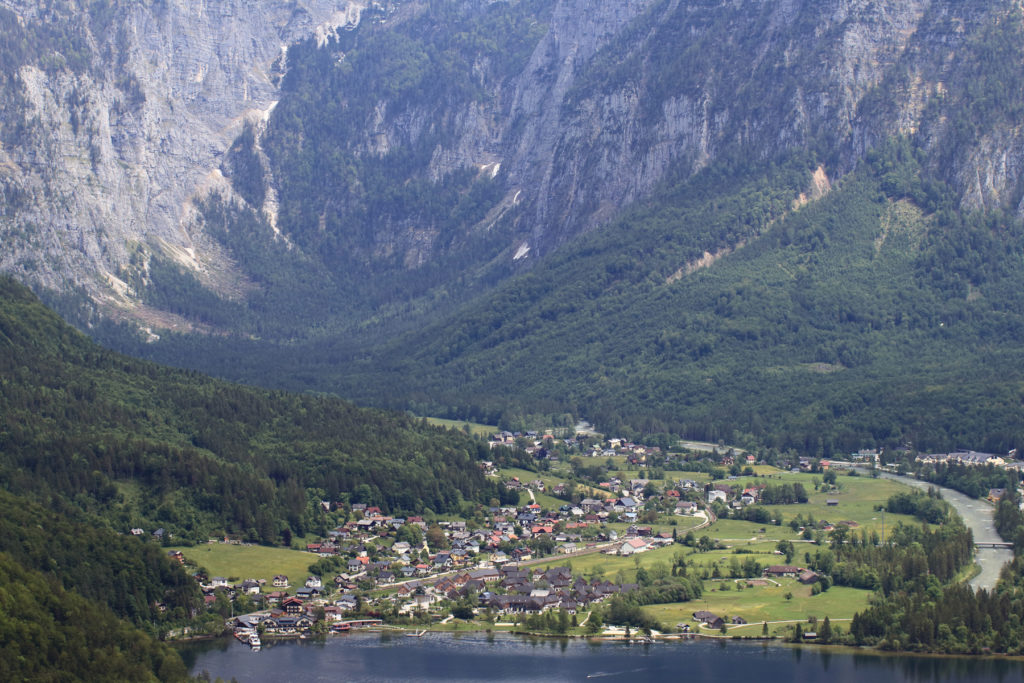
I quickly realised that my money would go a lot further accommodation-wise if I stayed across the water in Obertraun rather than Hallstatt itself. This similarly-sized village lacks the finest architectural details of its more famous neighbour, but that lets you experience its beautiful location without quite so many fellow tourists! This is where a tumultuous section of the Traun river meets the stillness of the Hallstatt lake, the narrow valley flanked by towering mountains. With seemingly more arrivals by train than car, it’s a wonderfully peaceful spot. Although there’s nothing specific to come and see, it’s just a pleasant place to be, and I enjoyed spending my mornings and evenings taking it all in.
I’d picked Hotel Seerose from the handful of guesthouse-style lodgings available here. In common with its peers, don’t expect an actual hotel – watch out for limited reception hours, and air conditioning hasn’t caught on yet. But it’s hard to argue with a nightly rate less than half that I’d be paying in Salzburg, and the view from the balcony more than made up for the relatively basic room.
The main game in town, though, is the Dormio Resort, which dominates the area around the lake. Although more than I needed for a solo trip, their range of self-catering chalets looked ideal for families or groups of friends. Guest or not, you’ll probably spend at least some time here: the main building houses one of Obertraun’s three restaurants and seemingly its only food shop!
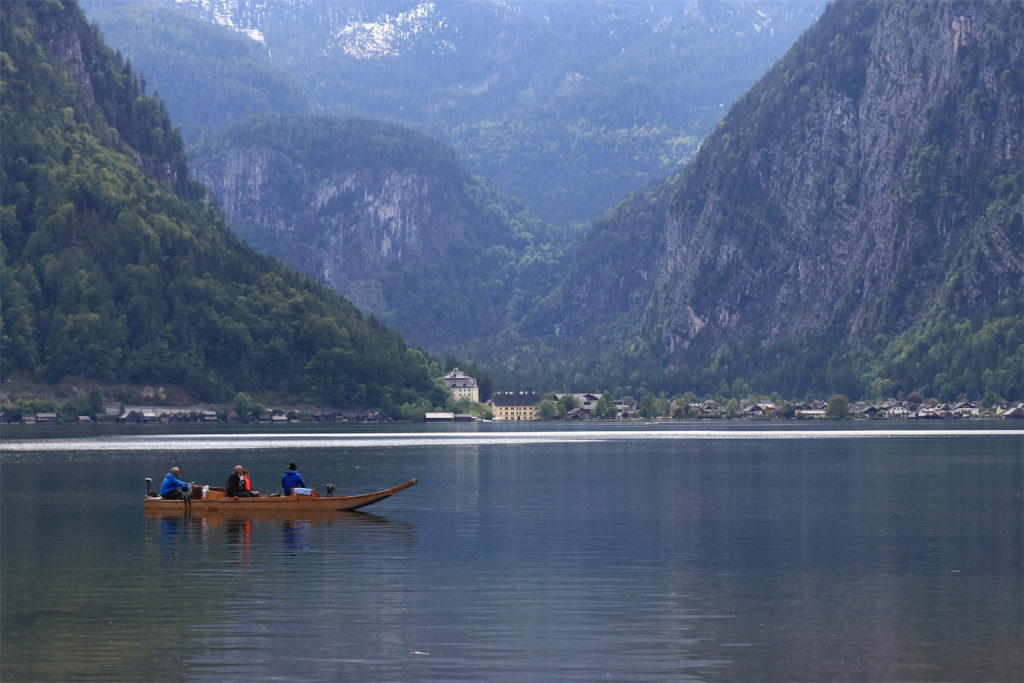
For getting to Hallstatt, there’s plenty of options along the road to the south of the lake, from buses and taxis to hiring a bike. But the best approach is across the water by boat. However, from Obertraun itself your options are a ferry on the (summer only) ’round trip south’ route, or a tiny wooden ‘Zille’; both are expensive! Better, then, to backtrack to Hallstatt railway station, where a trip aboard the ‘Stefanie’ ferry is just a couple of euros. Its schedule corresponds to train arrivals, although you may find (as I did on the way back) that it’s more convenient to join a sailing linked to a train that isn’t for Obertraun and walk along the shoreline.
Hallstatt
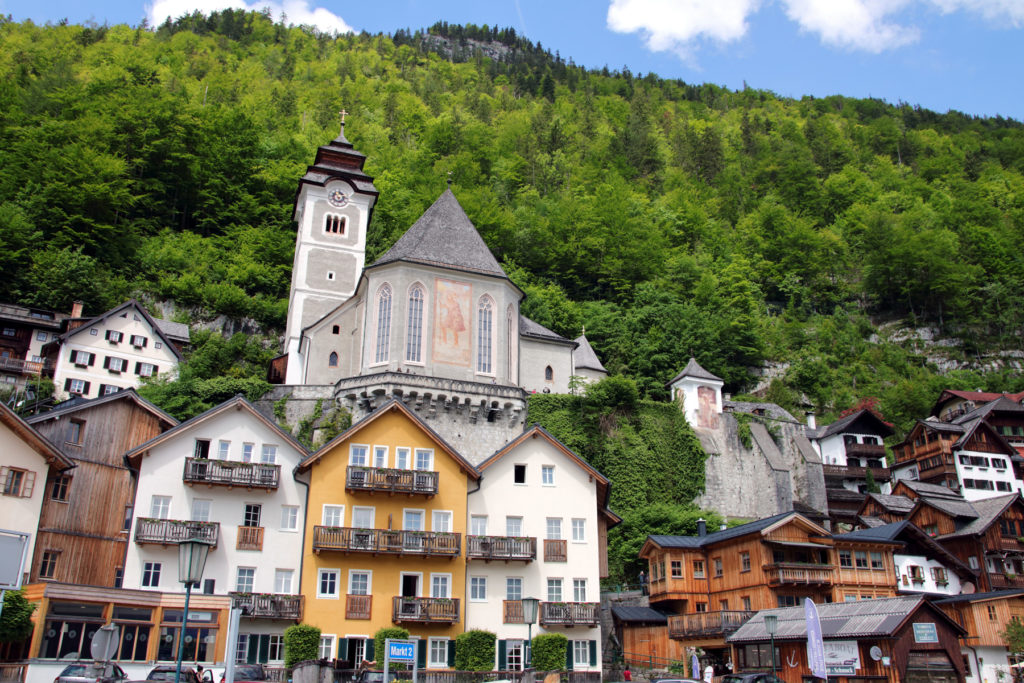
As the motivation for this entire trip, I naturally devoted my only full day in the area to exploring Hallstatt. The Stefanie delivers you to the marketplace, positioned in the heart of the most historic part of the village between its two iconic churches. From here it’s just a few minutes walk to the classic photo-point – although with a boat load of people all headed the same way, I decided to explore the centre first. Until the ferry over, I had been oblivious to the waterfall that forms part of Hallstatt’s mountain backdrop; tracing its crystal-clear waters back from the lake proved an interesting way to explore the densely-packed side streets.
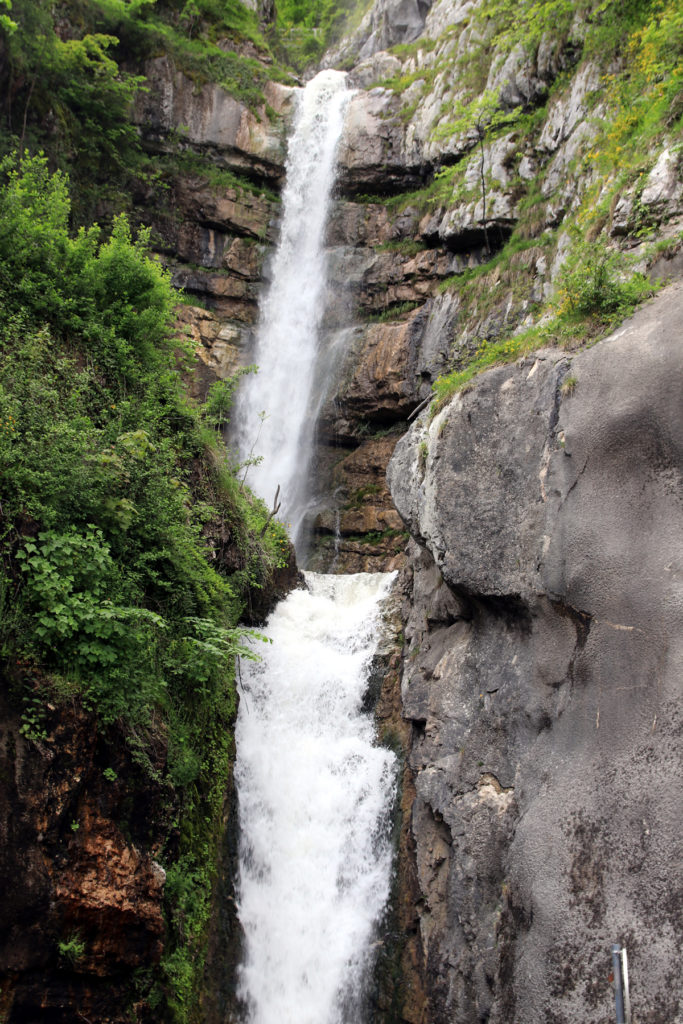
Hallstatt’s fancy buildings are a side effect of the lucrative salt mining that used to occur here. Today the mine is a museum, and although I don’t find salt interesting enough to warrant a visit, I did make use of their funicular to make easy work of a 300m climb above the rooftops. I had hoped to get a cheaper ride up, walk down ticket, but sadly the trail is closed indefinitely; the return ticket is a hefty €18. But from the mountain station, one can access the ‘skywalk’ for an excellent elevated view of Hallstatt and back over to Obertraun. I can also happily recommend a lunch of spinach gnocchi at the Rudolf’s Tower restaurant, best enjoyed outside on their terrace.
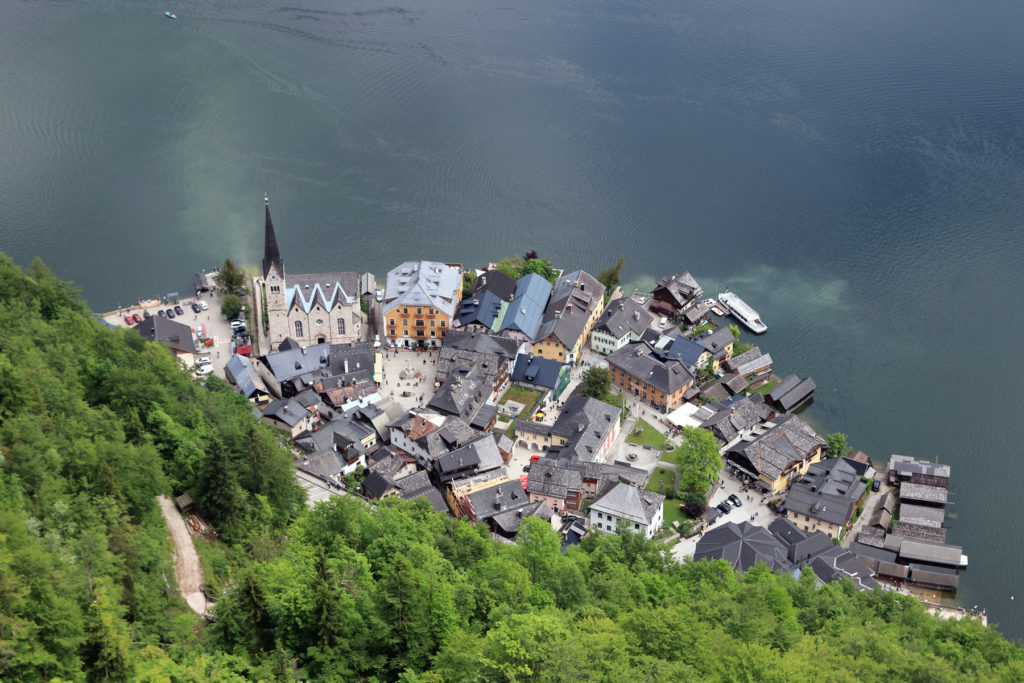
Overtourism is a perennial topic of discussion, and Hallstatt is an oft-cited example (whilst, paradoxically, continuing to appear on lists of hidden, secret or otherwise overlooked European gems). Its 750 or so residents must endure almost a million visitors passing through annually: enough to keep it busy throughout the year, but particularly so in peak season. Whilst this might boost the economy – the public toilets raise more money for local government than property taxes – it also distorts it, with shops adjusting both their wares and their prices to suit tourists over locals.
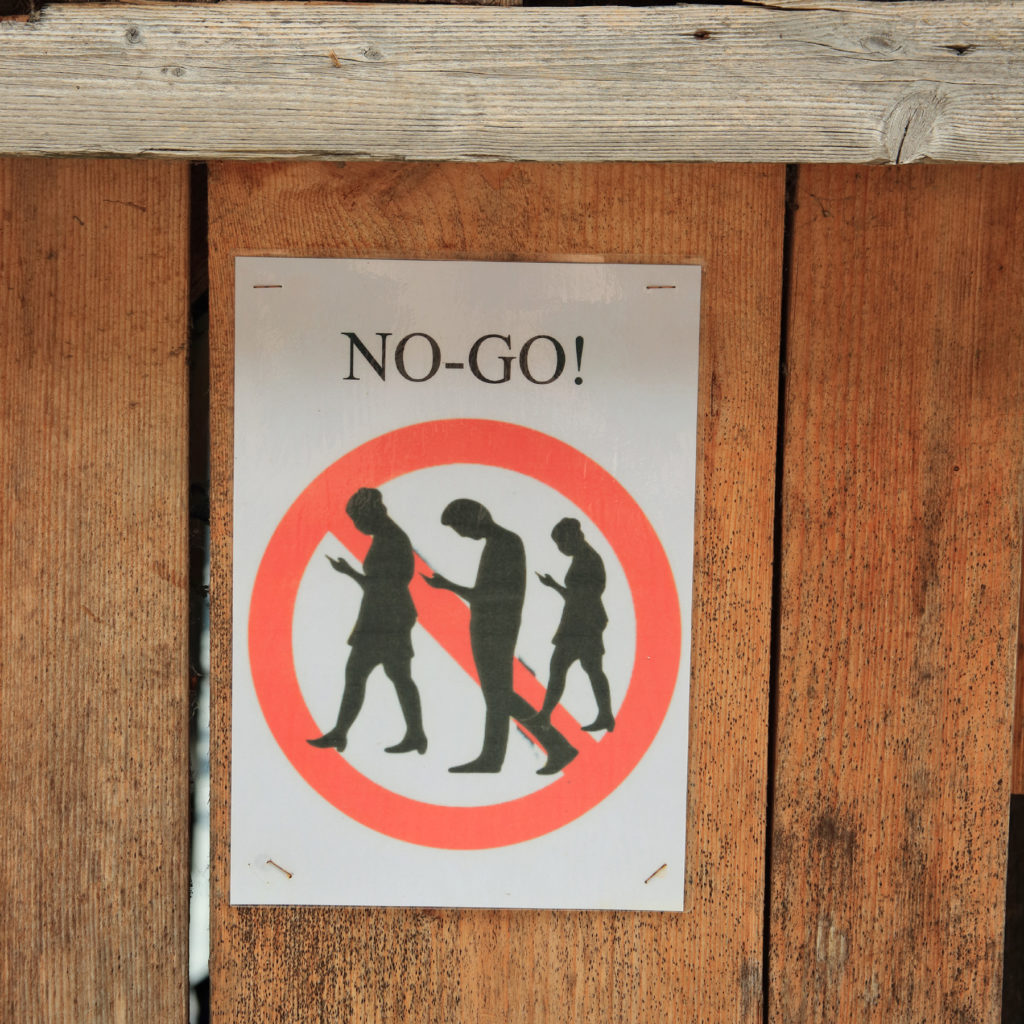
Obviously as one of this year’s number – lured here by social media, no less – I’m in no position to pass judgement. But for now I feel no guilt about visiting or (through sharing these words and pictures) encouraging others to do the same. It might be crowded for a village, but it wasn’t even as busy as back home in Bristol, never mind somewhere like Rome’s Trevi Fountain. Whilst there have obviously been side effects, tourism seems to be net positive for the region, and a major source of employment. My only frustration was that signs requesting silence in the churchyards were widely ignored. But for now, whilst undeniably popular, this world heritage site doesn’t seem to be at risk.
Dachstein Krippenstein
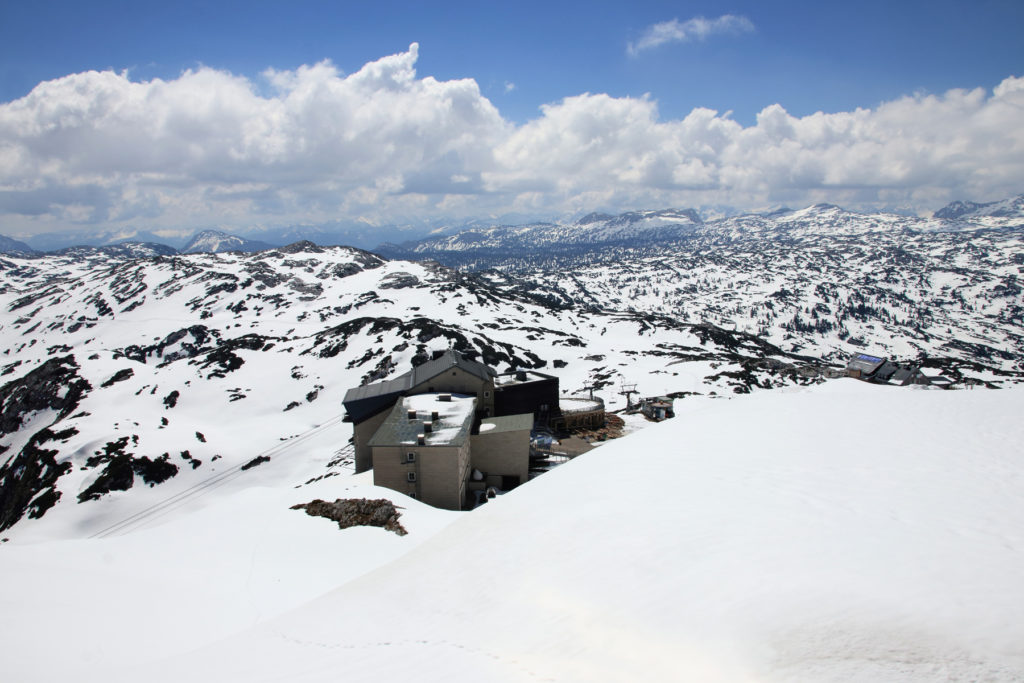
My visit was just on the cusp of the summer season at Dachstein, so the third cable car section would not be operating for another week. However, it also meant that the highest areas on Krippenstein, which I could reach, were still deep with snow – a wonderful contrast to temperatures which were climbing towards 30C in Obertraun. Down there in the valley, it’s easy to imagine that the lake is encircled by a simple ring of mountains – but reach the top of one and you discover that it’s just the first of many, the Dachstein ranges marching seemingly endlessly to the south. Meanwhile looking north you can take in much more of the Hallstätter See, plus both the nearby villages and many more on the far shore. Between the two unusually-shaped viewing platforms – 5Fingers and the World Heritage spiral – plus a more conventional panoramic terrace at the lodge where I had lunch, I was spoilt for choice.
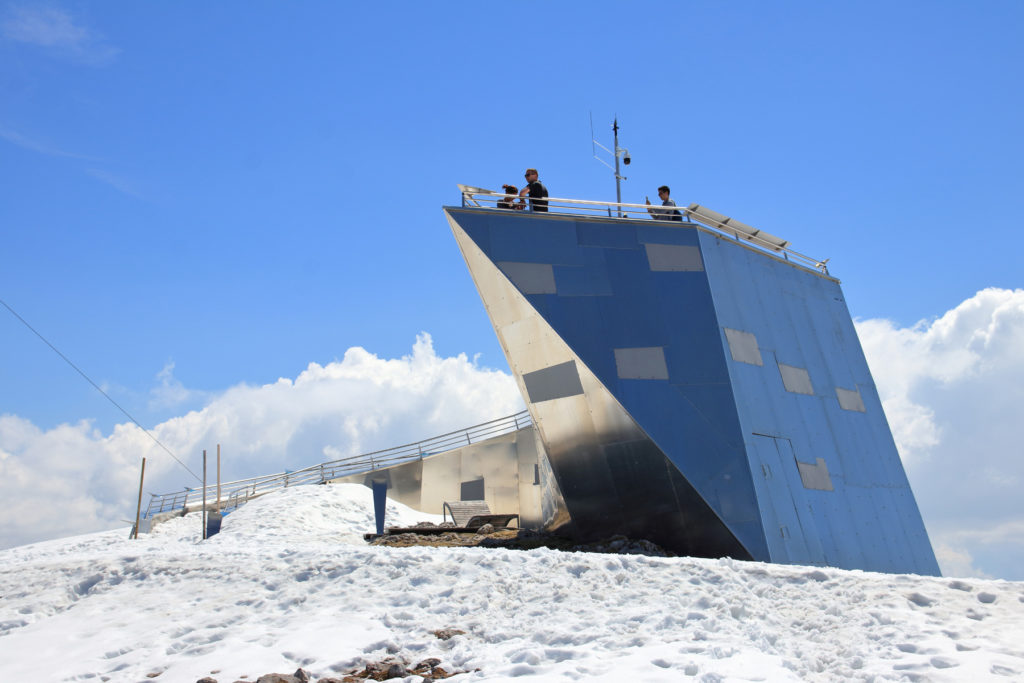
Even without access to the full site – a brief attempt confirmed that the particularly snowy Heilbronner hiking trail was beyond my level of preparation – I found myself running out of time to see everything, and had to skip the ice cave tour. Partly this was because with just six buses a day running between the base station and the centre of Obertraun, I had to start my descent by mid-afternoon to have any hope of collecting my luggage and making my train back to Salzburg. Although it was Hallstatt that lead me to the area, it’s Dachstein I wish I’d had longer for; as mentioned earlier, I’d happily have traded a night in Salzburg for an extra one here. At any rate, I think you’d be missing out if you didn’t experience both – a daytrip certainly isn’t enough!
If, however, you’re happy to explore vicariously, I’ve put together an extensive gallery of photos from my wanderings.


